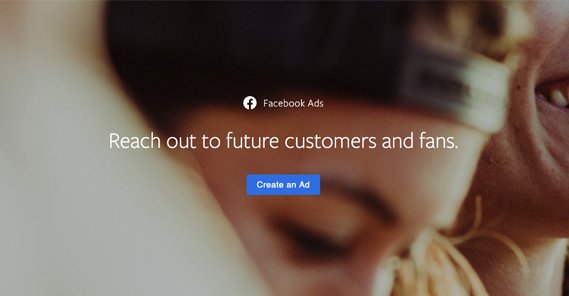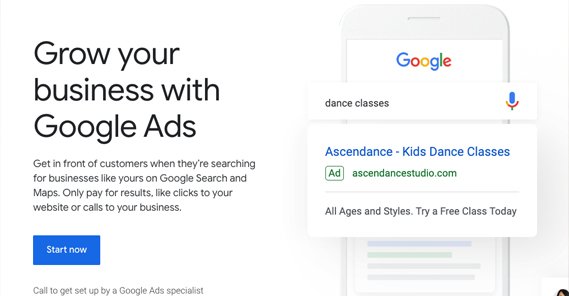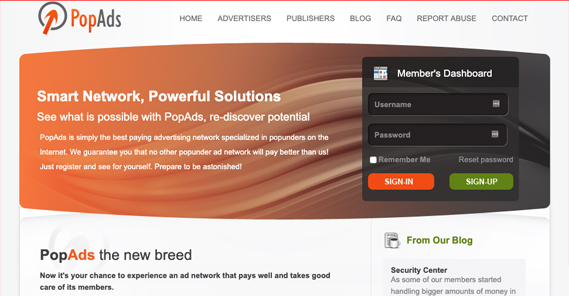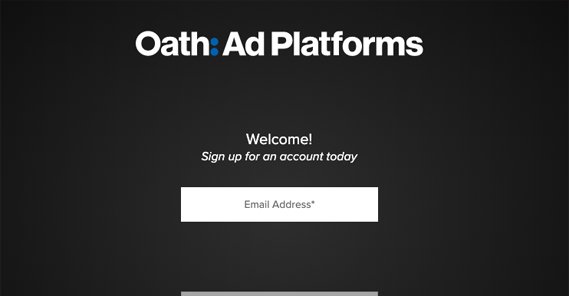Businesses need to advertise to survive. Without advertising, no one will ever know you exist, let alone what products you sell or who you’re trying to sell them to. Getting word out, getting exposure, and bringing in an audience is the single largest challenge for any business.
It’s no surprise that there are dozens of ad networks out there aimed at facilitating this process. Everyone seems to want to get in on the game, from Google and Facebook to small channels aimed at niche audiences. The question is, which of them is best for you?
In order to determine the best ad network, you need to look at a bunch of factors. An ad network is only as good as its publishers, right? With Facebook, Facebook itself is the publisher, and they have one of the largest audiences in the world. Google is similar, combining their own site and their entire display network.
Other ad networks have smaller networks of publishers. The question then becomes: are those publishers high quality? If they have ten million websites in their network, but all of them are spam sites and PBN sites with zero traffic, your ads don’t do anything. If you’re not reaching actual people – and if you’re not reaching people on relevant content – you’re paying for nothing.
You also have to consider whether the ad network caters to B2B or B2C companies. Most ad networks do both, but some lean heavily one way or the other. A B2B network is generally going to focus on audiences with a business emphasis; on sites that write for business owners or on sites that offer business services. A B2C network, by comparison, is targeted at “regular” people, regular consumers who are more likely to have an interest.
Every network has average performance rates. These are determined by pressure from both the advertiser and the publisher. If publishers are low quality, advertisers don’t want to pay much or put much effort into ads. If advertising is low quality, publishers don’t want to run the ads. It’s hard to tell what kind of ads and performance a network has, though, so you may want to do some research.
A Note on Effectiveness
Before I get into any specific list of ad networks, remember that my advice is by necessity generic. I have a wide variety of different business owners and entrepreneurs reading my content, so I try to avoid writing specifically for one niche or another, outside of targeted blog posts. A post about ad networks like this one is going to be broad.
What this means is that, when I recommend an ad network, I just mean it’s likely to be a good place to start. You need to do your own testing to make sure it’s actually a viable ad network for you to use.

How can you perform that testing? Well, you’re going to need a budget. Register for any ad network that interests you, set up your account, and run some ads. Ideally, you will know the basic information necessary to appropriately target those ads. Specifically, you want some audience demographic and interest information. Facebook Insights helps a lot with this, assuming you have an engaged audience. Otherwise, you need to figure out your buyer personas.
I recommend spending at least, say, $100 on these testing ads, and running them for a couple of weeks. The numbers may vary, however. You need to run them for however long it takes to get a statistically relevant amount of data. Then you can make a determination as to whether or not it’s worth investing more heavily into the ad network.
Be sure to calculate your raw number of conversions as well as your conversion rate and the cost per conversion for your ads. You can optimize these later, but if the baseline isn’t good enough, the network might not be worth the effort.
Alright, with all of that out of the way, let’s look at the top ad networks you can use as a B2C company. I’m going to give you a bunch of different networks to explore, in the hopes that you can find a few that work for you.
Facebook Ads

It should come as no surprise that the top two ad networks for pretty much anyone are going to be Facebook and Google. As such, I’m only going to cover them in brief. You’re familiar with Facebook ads, and if you’re not, well, you should be. Facebook ads are cheap, they’re effective, and they have best-in-class targeting options to use to optimize. There are so many different levers to pull that if you’re wasting money, it’s your own fault.
Google Ads

Again, Facebook and Google are the best in class. Google has an immense display network and almost as many targeting options as Facebook, though the operate in a different way.
Even if Google isn’t right for you, you should at least be investing a minimal budget into them, to reserve your space, target your own brand name, and capture interest from one of the largest audiences in the world. You’re just leaving exposure and conversions on the table if you don’t.
BuySellAds

BSA is one of the largest third party ad networks out there, and they’re able to maintain that position because they’re largely hands-off with their network, outside of filtering the worst of the worst. It’s a self-service ad platform, where publishers can put up their site statistics and get bids from advertisers for their ad space. As an advertiser, you can pick and choose the sites you want your ads to show on, and you can be as discerning as you want. This is called media buying.
Picking the right sites to target with BSA is a combination of art and timing. You need to find sites that have open space and reach them at the right time, and you need to develop a feeling for which sites are going to work and which are going to waste your time and money. I’m not going to lie here; it can take a while to develop this sense. For that reason, I would consider BSA to be either an intermediate or advanced-level advertising network.
PopAds

PopAds is a pop-under advertising network. I’m always a little wary of recommending these kinds of ads, because they tend to come across as spammy for many users, and it’s not necessarily something you want your brand to have as an association. On the other hand, they can be quite effective, especially if the ad network filters for actual spam and maintains a relatively high quality level for their network.
PopAds is a CPM model network, meaning you pay for the display regardless of whether or not this results in a conversion. CPM ads have the potential to be extremely lucrative, but you need to have a compelling ad, which may take a lot of optimization.
Rather than recommend more pop-under advertising networks, I’ll let this one speak for itself. If it’s a model you’re interested in pursuing, feel free to read this post with more recommendations for networks you can try. That post is aimed at the publisher side of things, but the advice holds true for both sides regardless.
Oath Ads

Oath is the company that owns Yahoo, AOL, Tumblr, and a whole host of other properties related to those brands today. Oath’s ad network, then, displays across a variety of different web properties and formats. In particular, they have a large mobile ad network. If you’re particularly targeting mobile users, or app users, you can get a lot of benefit out of using a network like Oath.
Oath is another large network, but large networks are what you want. Smaller niche networks can be useful for small businesses, but generally the limited exposure means limited growth. With large networks, the sky is the limit. As long as you have money to spend, you can get more out of it. With smaller networks, there’s a maximum saturation point you can hit. Thankfully, Oath is not one where reaching saturation will ever be a concern for most businesses.
Airpush

Speaking of mobile advertising, have I mentioned that it’s really good? Mobile advertising is pretty much essential for modern business. Over half of all web traffic is on mobile today, and that number is only going to keep growing as mobile devices become more powerful and more prevalent. Meanwhile, companies like Google are pushing mobile-first narratives, apps are doing more and more of our business, and the benefits just keep growing.
At the same time, mobile ad blocking is limited, and mobile offers new and novel formats for advertising, including push notification ads. There’s simply a ton of benefit to be had from mobile advertising, which makes mobile ad networks something to look into.
Airpush is one such mobile network. They have ad formats ranging from push notifications and overlays to in-app banners and videos. They also have great targeting options, programmatic buying options, and a huge network of over 150,000 apps as publishers. What’s not to love?
AdRecover

AdRecover is an interesting network in that it bridges the gap between traditional display ads and intrusive advertising. Ad blocking apps are so prevalent today that it’s difficult to see returns with a lot of traditional display advertising. Anti-blocking technology exists, but is often intrusive enough that it drives users away from publishers entirely. Other cases of anti-blocking scripts are just blocked themselves.
AdRecover finds a sweet spot in between these two extremes. When an ad is blocked, the space it leaves behind is, well, advertised. AdRecover works to recover this lost inventory and provides another channel for advertisers to try. It works best with minimally intrusive advertising, so it’s worth experimenting as a relatively new and novel format.
A Note on Cryptocurrencies
To round out the end of this post, I’d like to make a quick mention of cryptocurrencies and their role in advertising. While many people tout the benefits of crypto as a currency, it’s undeniable that it has a lot of issues. It’s a relatively new and untapped space, so there are a ton of companies popping up to make a quick buck and drop it when the going gets tough. Since crypto is riddled with scams and has very little regulation or recourse for those who lose money, it’s very much a “take your life into your own hands” niche.
There exist a variety of ad networks that accept cryptocurrencies for payments or that pay out in crypto. Unfortunately, turnover is high, so anything I recommend to you now is likely to be gone a month from now. If you’re interested in crypto for the payment side of advertising, feel free to explore these options, but don’t bother if you’re not already invested.
Finally, before I wrap things up and hand it all over to you, I’d like to draw your attention to this old post. It’s a list of over 100 different ad networks you might be interested in looking into. Some of them may be dead by now, since the post was published four years ago, but that doesn’t mean it’s no longer relevant. There are plenty of options you can choose from, if you want to do a little digging.
So, that’s the scoop! Now let’s hear from you. I know you all are playing around with different ad networks, so which ones have proven to be the best for you? Let me know in the comments.



0 Comments